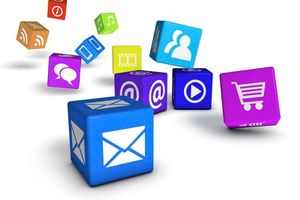Technological trends in healthcare in 2021 and beyond

There was a sharp increase in the adoption of telemedicine at the onset of the pandemic.
What you need to know:
Technological advancements in medicine are expected to not only improve healthcare but also make it cheaper.
A 2018 study by Deloitte found that there were more than 500,000 different types of medical technology devices in production and circulation.
Efficiency and precision are crucial aspects of any industry.
In healthcare and medicine, technological advancements have reduced waiting periods for tests results, more accurate diagnoses, and more successful treatments. It is no surprise that life expectancy has risen sharply in almost all populations in the world, at least pre-COVID-19.
On the flip side, however, the COVID-19 pandemic has fast-tracked the adoption of technologies in healthcare.
Telemedicine
When WHO declared COVID-19 a pandemic in March 2020, there was a frenzy about working from home. But even in the circumstances, not many people imagined the possibility of doctors attending to their patients remotely.
Analyses of trends at the time show that there was a sharp increase in the adoption of telemedicine around March. Even as lockdowns were reduced worldwide towards the end of 2020, the demand for telemedicine persisted. An analysis by McKinsey & Company shows that even though there was a slight dip from the initial spike, the practice is still 38 times more popular than it was at the start of the pandemic.
Internet of Medical Things - IoMT
The concept of Internet of Things (IoT) is quite a popular and hot trend in businesses and telecommunications. It involves the interconnectivity of systems through the Internet for improved collection, analysis, and sharing of data.
The Internet of Medical Things works in a similar way, only that now it involves the integration of medical gadgets and systems. Through IoMT, the various gadgets in a medical facility are interconnected through the Internet to share and analyse medical data faster and more accurately.
Some systems allow you to also sync the health apps in your smartphone with your doctor’s systems. The data you share with the system can help the doctor detect and treat chronic illnesses when in the early stages.
McKinsey & Company estimates that by 2025, the IoMT will be at least 30% of the IoT industry.
3D-Printing
3D Printing technology has been available for a while now and is widely used in making models for various industries. In the medical field, technology has improved various processes and procedures.
Orthopaedic implants are medical devices used to replace the bones and joints of patients. 3D printing has made it possible for medical personnel to design and create personalised implants that are a better fit for the patient. Although this was possible even without 3D printing technology, the technology makes it faster, cheaper, and more accurate.
In surgery, 3D-printing tech is increasingly being used to design tools that are more appropriate for your body. E.g., if there is an anatomical anomaly that makes it difficult or impossible to use a tool of conventional size and shape, the medical personnel can have one designed in a suitable size and shape.
Still in surgery, the technology is now being used to create models of patient’s organs. The doctors can use the models to analyse your conditions more deeply and prepare for the surgery. It can also help determine other related factors such as the compatibility of donor organs with your organs.
Nanotechnology
The use of technology to analyse and manipulate the body at a molecular level is scary for many people. But scientists in healthcare and medicine believe this could be the answer to some of the most persistent chronic illnesses, especially cancer.
Research has shown that each patient is different at a cellular and molecular level. That’s why your body’s reaction to a certain medication may vary from other patients taking the same treatment for the same illness. Through nanotechnology, doctors can carry out a more detailed analysis of your body and prescribe personalised medication and treatment.
There is hope that such a detailed analysis of a patient’s body can help doctors detect markers for certain illnesses. Such information can then be used to prevent the illness or prepare for the treatment once the symptoms appear.
Lots of discussion on the use of nanotechnology often centre on cancer. But it can also be used in the diagnosis and treatment of other illnesses such as mental and cognitive illness, allergies, and lifestyle diseases.
After hardware, healthcare is adopting software too
There has been plenty of tech in healthcare from as early as the 19th century when devices such as the stethoscope were invented. The industrial revolution saw an increase in not only the usage but also the variety of technological devices in medical facilities and processes. A 2018 study by Deloitte found that there were more than 500,000 different types of medical technology devices in production and circulation.
With concepts such as the IoMT and nanotechnology, you can expect to see more software in the medical field, to help the collection, analysis, sharing, and storage of medical data.



